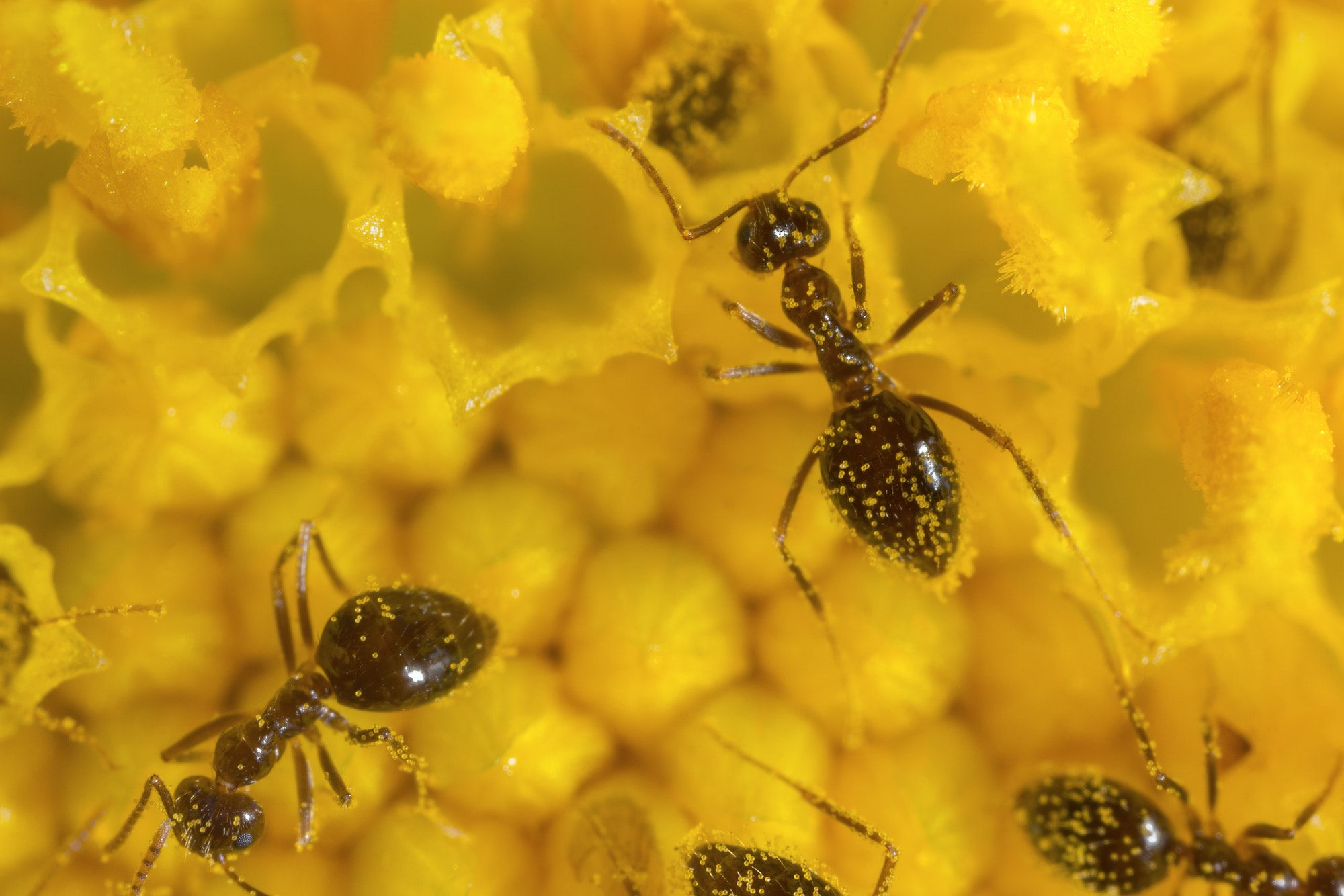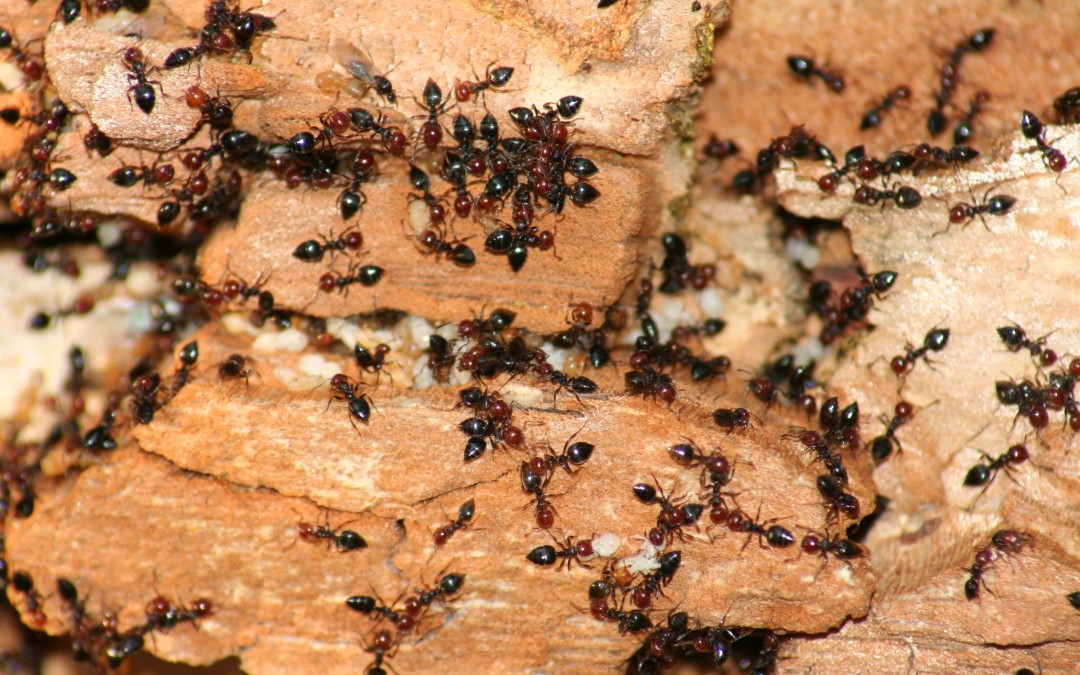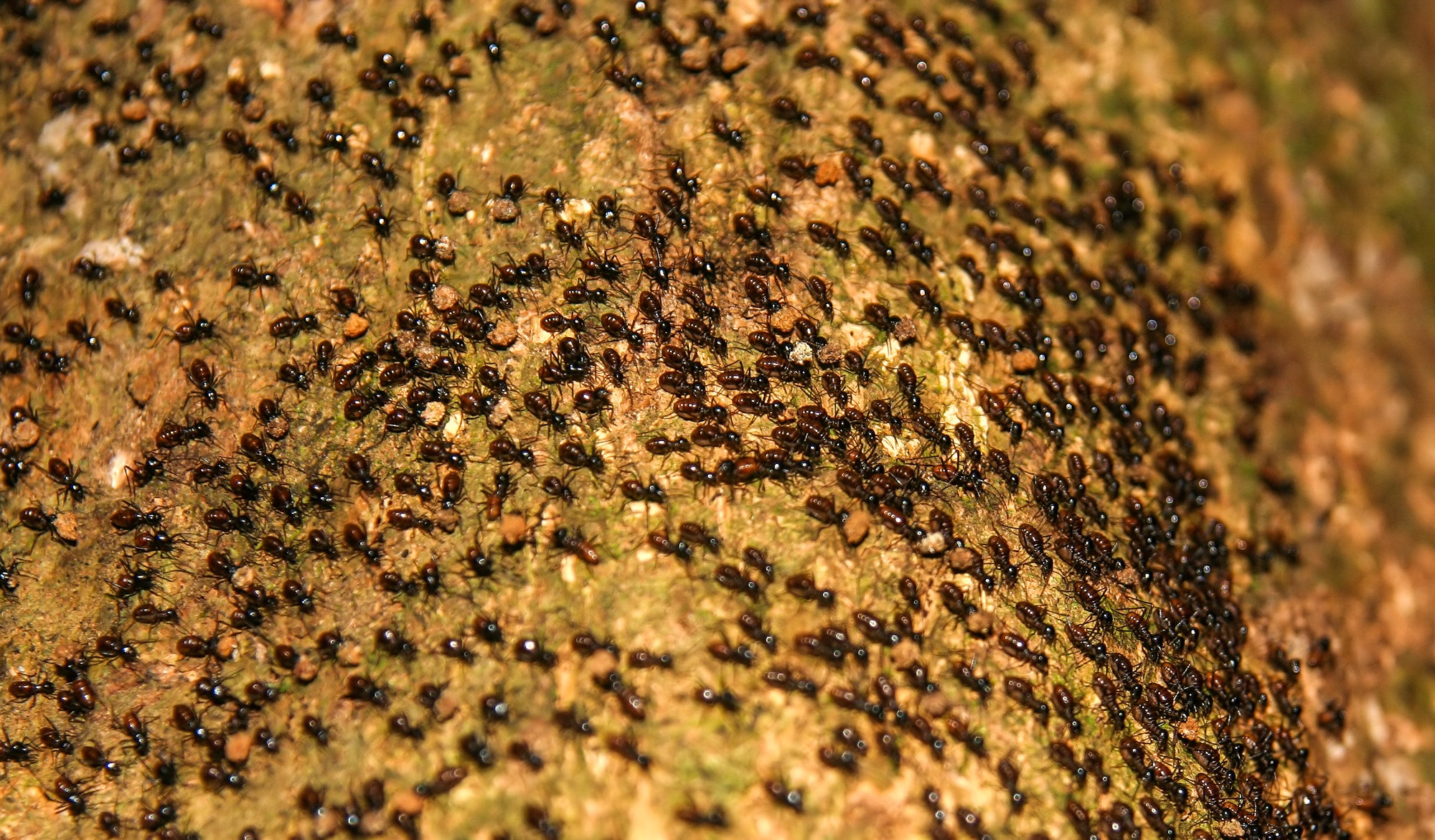How Do Ants Reproduce?
Ants are one of the most abundant insects on our planet and the reasons are their eusocial, complex societal behaviors and their ability to survive in many and various ecosystems. Like most other animal societies, reproduction is one of the core reasons why ants are so prevalent. Reproduction for ants is a complex phenomenon that involves finding, selecting and successfully fertilizing females to ensure that the eggs laid are able to survive and molt through the successive stages of the ant’s life cycle – larvae, pupae and adults.
Each ant colony begins with, and centers upon, the queen, whose sole purpose is to reproduce. This reproductive behavior begins with winged males and virgin winged queens leaving the existing nest and swarming to search for a mate from another colony.

The males and females within the swarm are called alates and their wings allow them to disperse away from the “mother” colony, so the likelihood is greater that no inbreeding with their relatives occurs.
Once mated, the queen never mates again. Instead of repetitive mating, she stores the male’s sperm in a specialized pouch until such time as she opens the pouch and allows sperm to fertilize the eggs she produces.
After mating, queen ants and male ants lose their wings. The queen scurries off in search of a site to start her new nest. If she survives, she digs a nest, lays eggs, and single-handedly raises her first brood that consists entirely of workers. After mating, the male generally lives a short life in isolation.
The nest’s queen controls the gender and function of her offspring since her fertilized eggs become either wingless female workers or reproductively capable virgin queens.
Unfertilized eggs develop into winged males who do no work other than to fertilize a virgin queen. The queen produces myriads of workers by secreting a chemical that retards wing growth and ovary development in the female larvae. Virgin queens are produced only when there are sufficient workers to allow for the expansion of the colony.

The workers enlarge the nest, excavate elaborate tunnel systems, and transport new eggs into special hatching chambers. Hatchling larvae are fed and cleaned, and pupated larvae in cocoons are protected until the young adults emerge to become workers themselves. At this point the colony’s workers are mostly directed to expansion of the colony and caring for the queen.
Depending upon the ant species, it may take from one to several years for a colony to become large enough for the queen to begin producing virgin queens and males that will leave the colony, swarm, mate and begin a new colony in another location. This process and behavior is typical of most ant colonies.
However, some ant species reproduce and develop new colonies with several queens who work together. Sometimes, groups of workers swarm from the nest with a young queen to help her establish her new nest.
In colonies with several already fertile queens, an entire group of ants will break away along with their with their individual queens to establish individual colonies. In single queen colonies, such as those of some fire ants, the death of the queen means the death of the colony, as she leaves no successors. To sum it up, only queen ants lay eggs and are responsible for reproducton.








